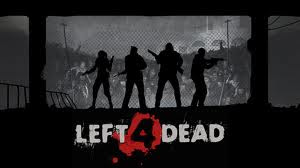Death in video games has always been a factor, especially once the games started advancing with better storylines and graphics. Even though in the early games they may not have focused on the deaths so much, they were still there and they were still violent depending on how it's looked upon. Super Mario stomps his enemies to death, Pacman turns himself inside out until he is nothing, in Burger Time the chef basically has a seizure, and so on. In the mid 90s, when graphics were progressing and so were games, we had more visual deaths evolving. And now through time with the advancement of video game genres/styles and better graphics with consols such as the X-Box 360 & Playstation 3, we have come to a whole new gaming experience than we had years ago.
In Left 4 Dead 1 & 2, we experience these newest styles of death in video games. The violence and deaths in this game are everywhere and occur almost every second it feels like. When the rush of zombies come at you, you and your three teammates are littering ammo everywhere trying to kill everything around you. When this happens you see limbs flying in the air, heads getting blown off, etc. It is a much more realistic way of killing your enemies than in the older games, like Super Mario World or something.
Since Left 4 Dead is meant for replay value and the levels are fairly short, you don't really get to feel for the characters as much as you would with other video games, such as RPGs. In lots of RPGs you get to build up your character over time and choose primarily what happens or what certain characters can do. This then progresses the storyline and changes the game up due to what you have chosen to do. Over time, you start to feel for the characters like you would in a movie, only this time you are in control of what they do so it can create an even further bonding experience. In Left 4 Dead, there are several storylines to choose from with chapters within them. On average each storyline can take an hour or so and then it is over with. Due to the lack of backstory with the characters and the short length of gameplay per story, you cannot learn much about your characters, which in the end leaves you with less emotion and sorrow towards a character if they end up dying.






